Edamame is a protein-rich, easy-to-care for bean that’s pretty expensive and sometimes hard to find at the store. If you took the leap this year to plant some of your own, stick around. I’m going to show you when to harvest, when not to harvest, two different methods to do it, plus some storage tips.
Edamame Are Soybeans!
Very popular in Japan, China and Korea, edamame is an ancient food cultivated as far back as 7000 years ago in China. It’s actually the immature version of a soybean, giving it the alternate name of green soybean. And in some parts of the world, it’s referred to as vegetable soybean or sweet bean.
When To Harvest Edamame
What Are the Days To Harvest for Edamame?
Soybeans can be a spring, summer or fall crop, so when you harvest them is going to be based on when you planted them and the variety that you picked. Edamame seed varieties mature anywhere from 75 to 95 days and sometimes longer if it’s less than an ideal climate. This year I planted Midori Giant from High Mowing Seeds. They have a maturity date of 80 to 95 days.
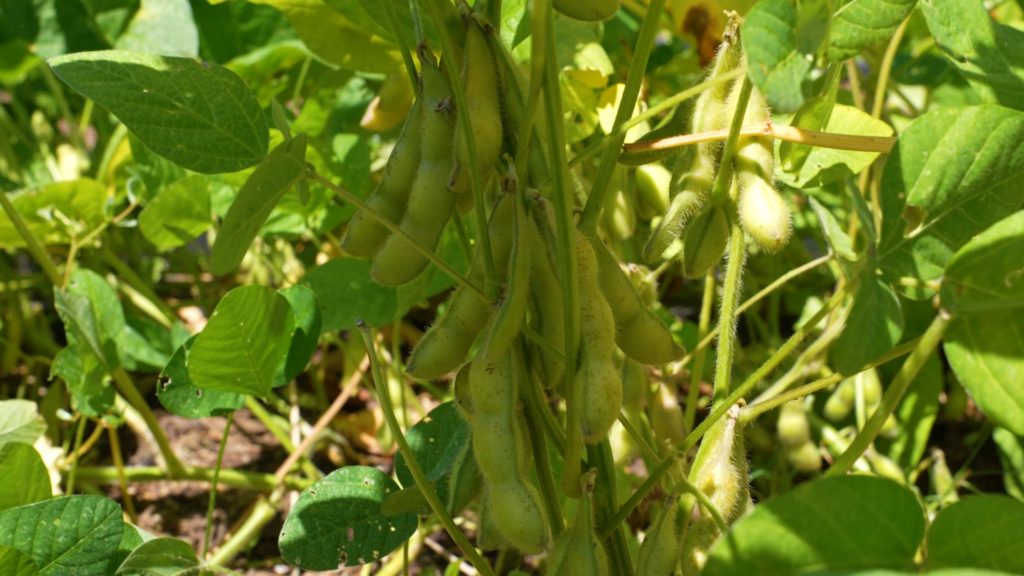
The easiest way to know when your edamame might be ready is to simply check your seed package or product page and mark the date on your calendar.
If you’re a total nerd like me, I have a garden planner spreadsheet that does all this work for me. I put in the dates to maturity for the variety that I picked, when I planted it, and it pops out the date that I need to start looking. If you’d like to get a copy of this crazy spreadsheet, visit my shop, and you can download a version that you can customize for your own garden.
How Many Beans Should Edamame Have?
Soybeans grow tiny flowers that the pods set from. You’ll see tiny bean pods next, but this is not what you want. They get bigger filling out the pods with 1 to 4 beans, with the beans getting plumper and plumper.
Commercially, edamame is considered more marketable with three beans, so when I first started growing these, I thought that was how all the pods had to be. I actually waited for more beans to grow and I missed my harvest window. So just in case you’re wondering the same thing. I am here to tell you that the number of beans in the pods do not matter. It does not affect the quality or the taste. It is all about the color and shape.
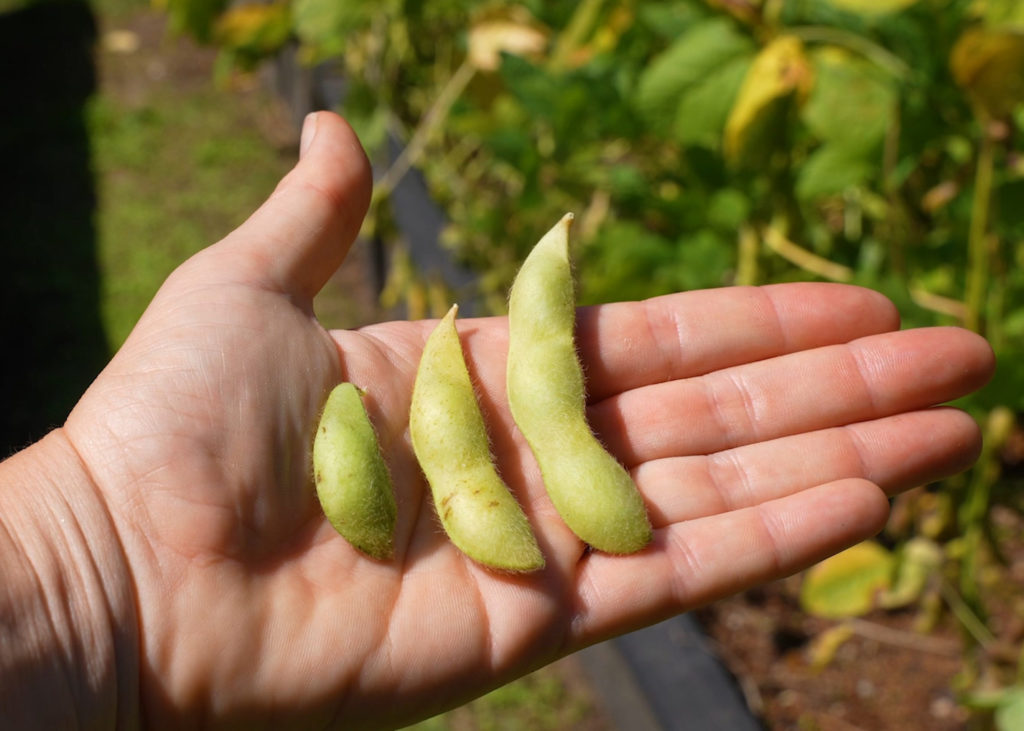
When To Pick Soybeans For Edamame?
When the beans are almost touching with the pod 90% filled and bright green, then they’re at the peak edamame harvesting time.
Edamame is often ready all at the same time and the peak harvest window can be as little as only 3 to 4 days long, so you need to be prepared.
Then they get to what I call the “bulging” stage, when the beans are touching and the pod is 100% full. This is your snooze alarm going off here.
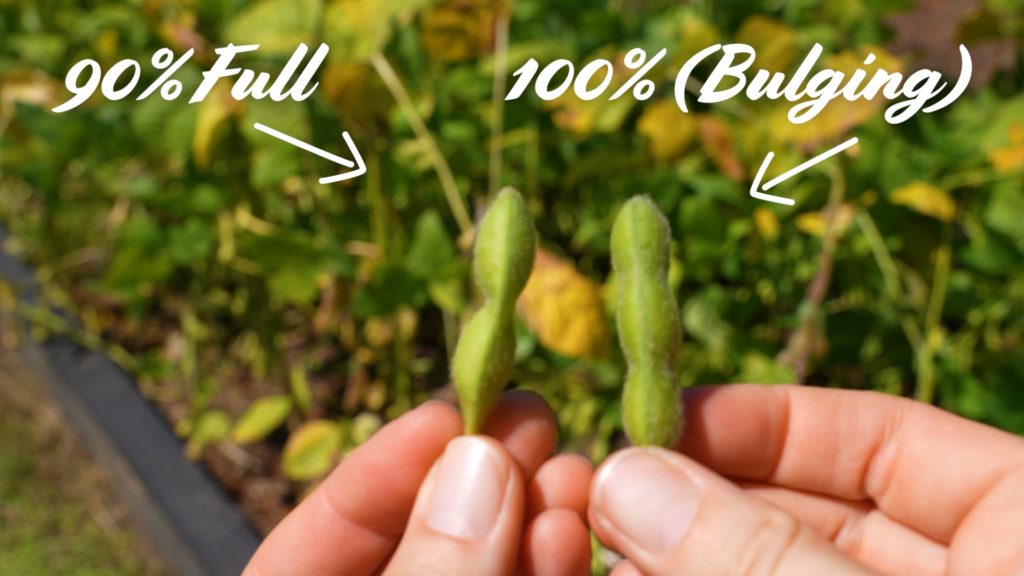
After this, both the plant and the bean starts to get more and more yellow. A lot of my plants are at this beginning yellow stage. I should have harvested about a week ago, but these are completely salvageable. For those of you worried it’s too late, don’t be worried. I’m going to show you how to triage them shortly.
Harvesting Mature Soybeans or Saving Edamame Seed
After this, the plant finally turns brown, the pods dry out, and the plant dies back. Simply reaching maturity or a killing frost can cause this. If your beans are to this point, you’re still good believe it or not. You can harvest these as mature, dried soybeans or use them to plant new edamame plants next season.
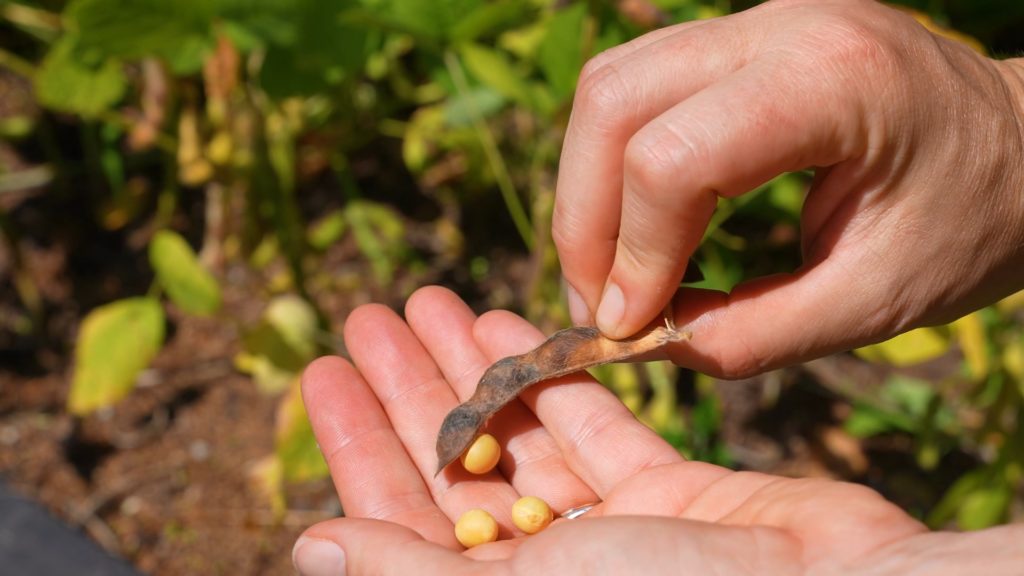
I would recommend you save seed regardless of whether or not it was accident, just because beans seeds are so expensive and the availability has been so sketchy lately. If you decide to dry them on the plant just watch out for animals. Squirrels love my dried soybeans and I think I have voles too. (While I was harvesting, I noticed some small animal had dug in through the side, excavated the soil and is now in my edamame bed. I’m going to have to be careful!)
Harvesting Edamame by the Pod
When the edamame crop first starts to come in, I like to harvest by the pod so the plant keeps growing. I come out here right before dinner and harvest 20 to 30 pods, enough for a side dish for dinner or a stir fry.
Edamame grows from the bottom of the plant to the top, so start at the bottom. You’ll find the most mature pods there. They are very firmly attached, so I always like to come prepared with some pruners. I love my Felco pruners, worth every penny. I keep these in the foyer closet ready for harvesting at all times.
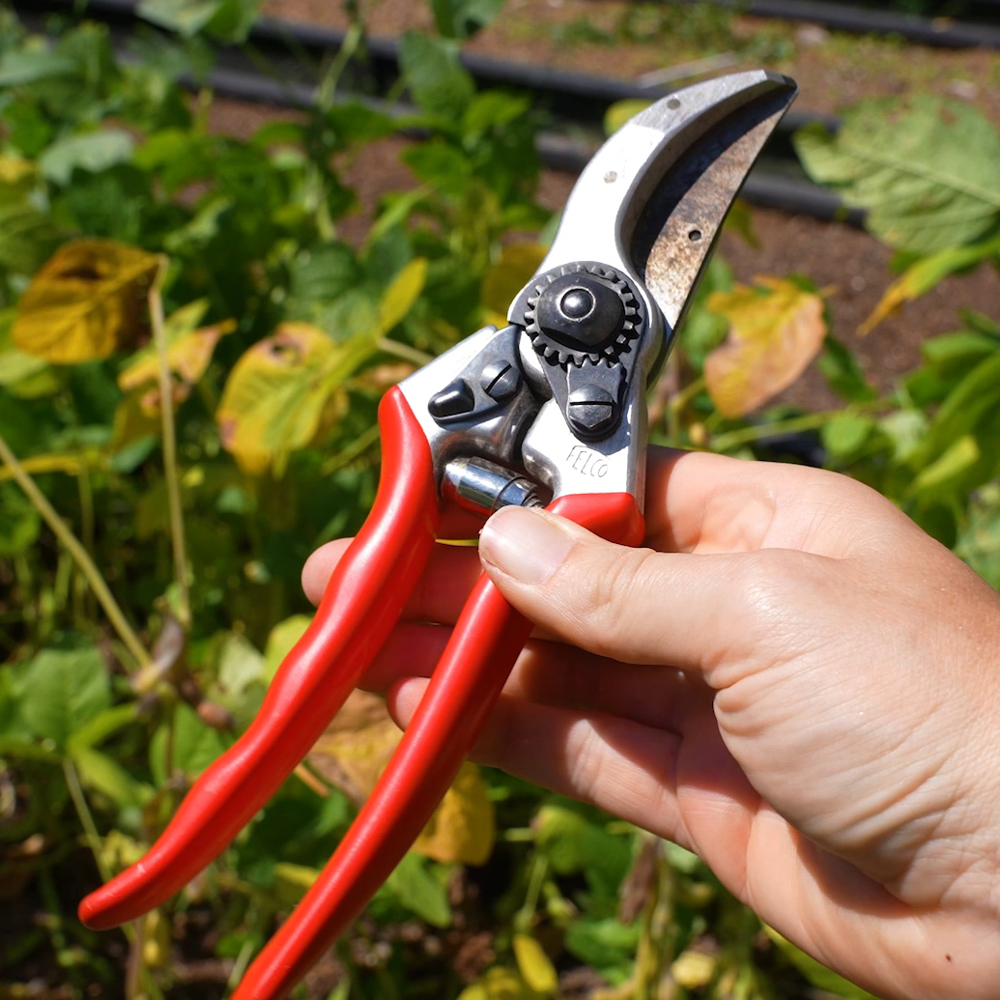
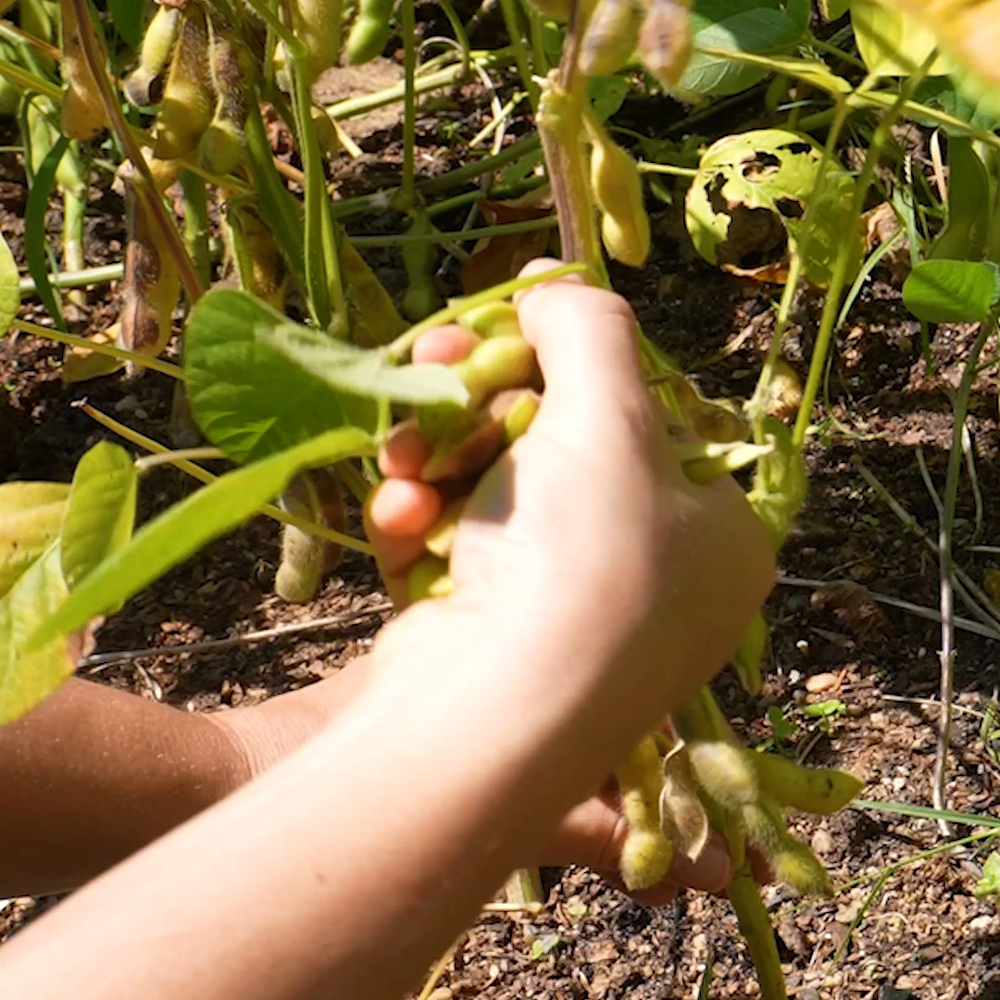
You can also remove them with your hands by holding the stem firmly with one hand and pulling up. Make sure not to pull down or you might strip the whole branch or even the stem off. Pulling up does require some force. So as mentioned, hold the stem or you might uproot the entire plant since the roots are very shallow. (Ask me how I know this!)
How To Harvest a Whole Bed of Edamame Plants
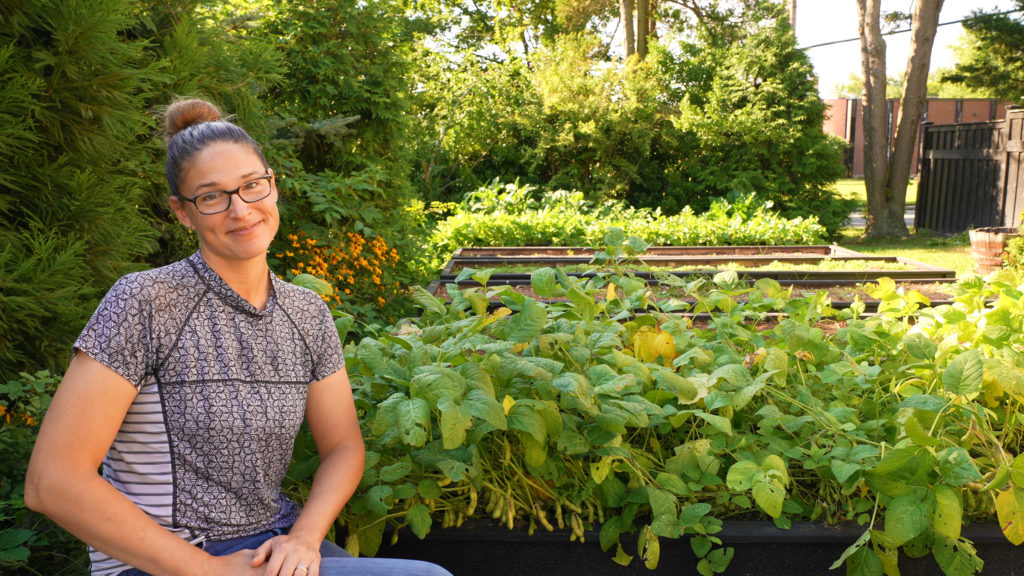
If your whole bed or plant is ready to be harvested like mine is right now, the easiest way to do that is to harvest it by the plant.
Should You Leave the Soybean Roots in the Soil?
Edamame, like other legumes, fixes nitrogen when rhizobia bacteria creates nodules on its roots. For that reason, a lot of people say to leave the roots in the soil and cut the stem at the ground. And that may still be a good idea for you if you’re practicing no-till gardening.
But the truth about nitrogen fixing is that the nitrogen is not held in the root nodules. It’s distributed to the plant for its growth during its growing season. So, unless you plan on tilling the whole edamame plant under to decompose, you won’t get too much benefit of leaving just the roots. The biomass is just too small.
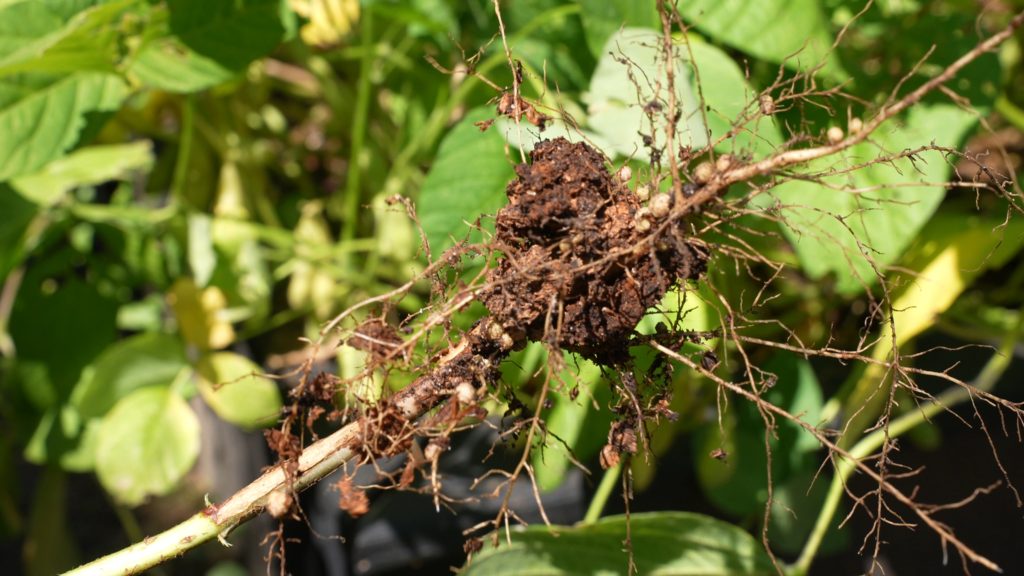
That being said, I still cut the plants at the base because I find it a lot easier and cleaner to harvest from the plant without having a bunch of dirty wet roots in my face. Depending on what crop is after this, I may or may not fork the roots out when I prep the bed.
Removing Edamame From the Stem
At this point, you can turn the plants upside down and strip off the pods. The beans grow in bunches of 1-4 pods. If they’re in the same bunch, it’s faster to grab them all at once.
Or, leave the beans on the stem. If you’re looking for a quick compact and package-less way to store your edamame, you can simply remove the leaves and store on the stem as it’s traditionally stored.
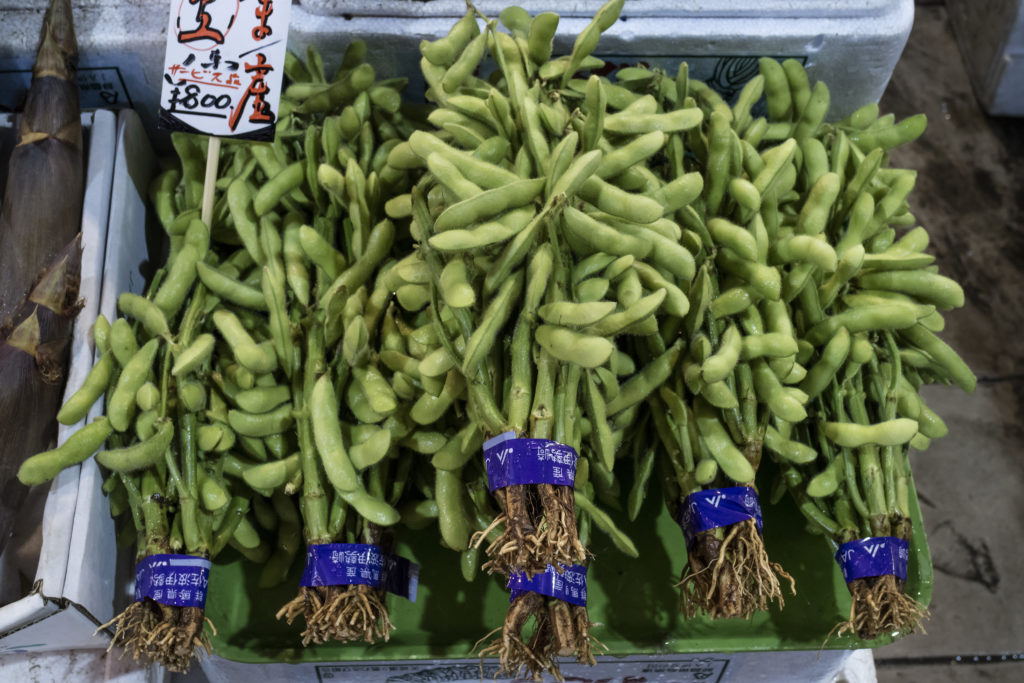
Compost (or Eat!) Edamame Leaves
Remember to compost the leaves and stems to add the nitrogen to next season’s bed that way. Or, if you’re feeling adventurous, try eating the edamame leaves, which, like all bean plants, are edible. Like one of my favorite greens, broccoli leaves, which I also have a video about, edamame leaves make great substitutes for sorrel, kale and spinach in many recipes.
How to Sort Edamame Beans (Eating vs. Seed)
I’m going to be separating the greener beans from the dryer beans that I’m going to be saving for seed for next year. Instead of Netflix and chill, I’m going to be doing “Netflix and Shell.”
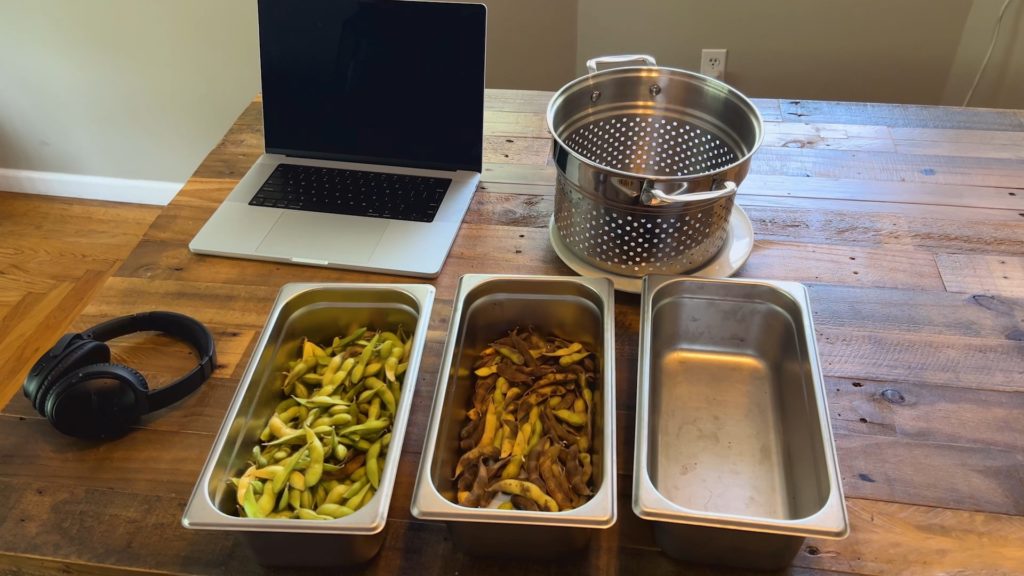
On the left is what I harvested. In the middle bin are the ones that I kind of sorted while I was harvesting, but it’s mixed. There’s some really brown dried ones that I could shell right now and save for seed. And then I have some greener ones that I don’t want to eat, I want to save for seed too, but they still need to be dried more in my dehydrator before I can store them.
So I’m going to sit here and sort these out. The ones that I’m going to be storing for eating are going into the pot to blanch, and then I’m going to separate the brown and the half brown into two different piles.
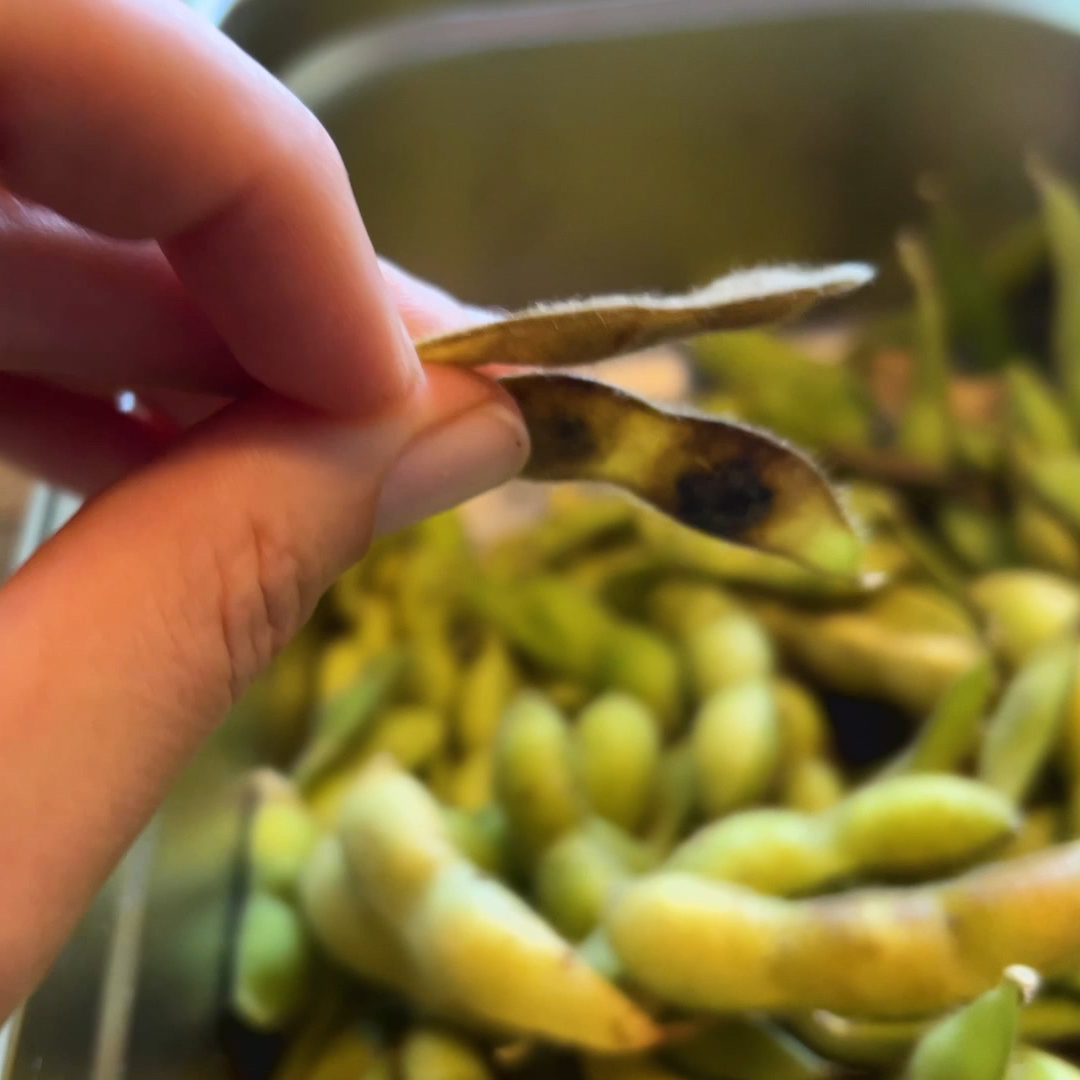
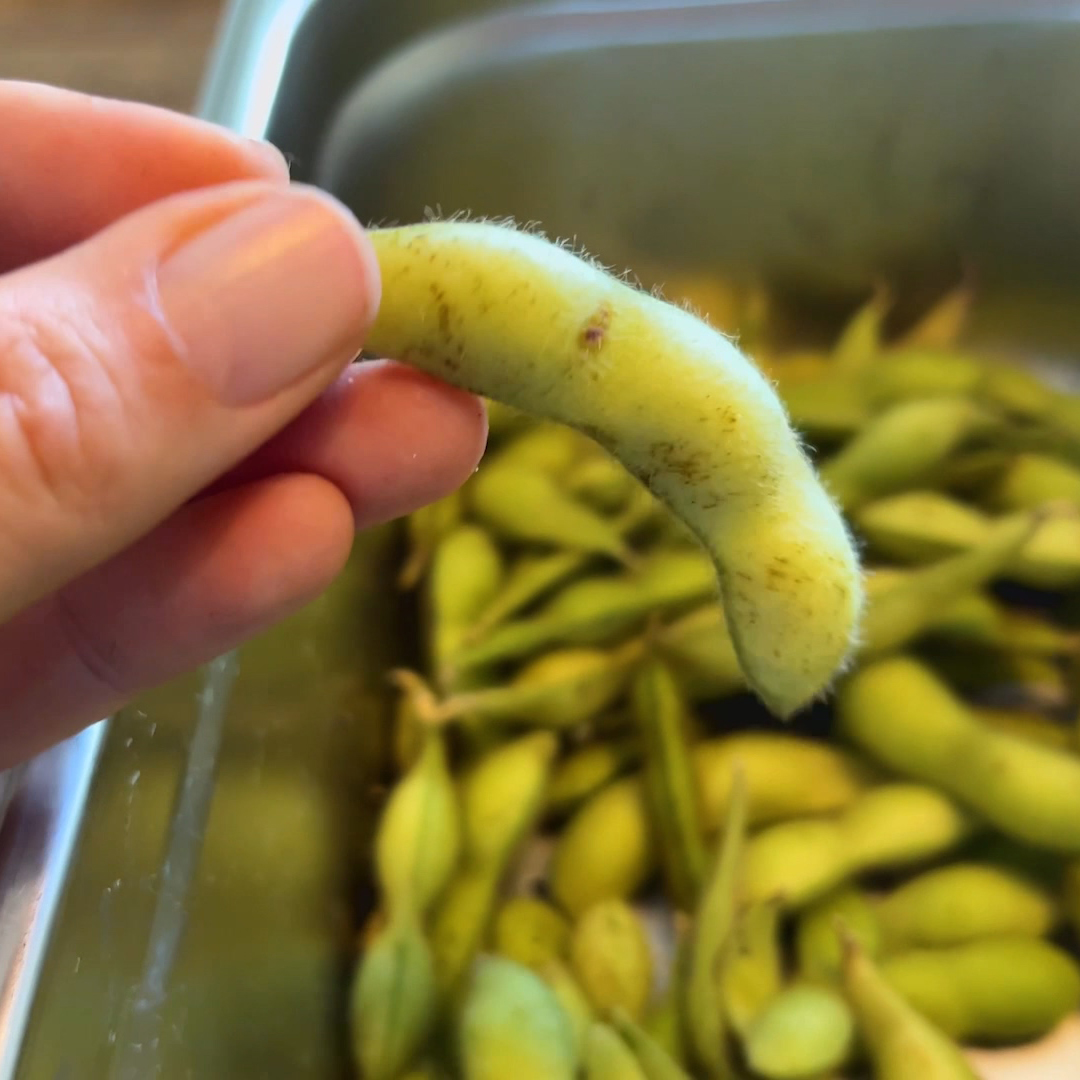
I have about five bins, so I bet I’m going to have to watch at least two movies to do this entire harvest because after I blanch them, I need to actually take them out of the shell!
How To Store Edamame
Storing Fresh Edamame
Store at 32ºF (0ºC) as quickly as possible after harvest, with a humidity of 95%. For most of us, that will be a loosely closed plastic bag or container in the refrigerator. Use fresh edamame within 2 to 3 days of harvesting, preferably the same day.
How to Freeze Edamame
If you plan on freezing edamame in the shell, boil them for 3 minutes, then immerse them in ice water, pat dry and store in freezer bags.
To freeze shelled edamame, do the same, just boil a little longer, 3 to 5 minutes. This removes the white residue between the pod and bean. It’s called the pericarp and it makes the beans really hard to shell raw. (And ask me how I found this out!) Once the pericarp is gone, you can easily squeeze out the beans and store them in mason jars or bags in the freezer. And you can keep them in the freezer up to 12 months.
I love, love, love edamame. I would love to know what your favorite recipes are or if you have any unique edamame harvesting tips. Let us all know and the comments.
And if this post helped you out, let me know in the comments too! Remember to sign up for my email newsletter or subscribe to my YouTube channel for more garden resources. And keep gardening like a boss and I’ll see you soon!
Sources
- Field To Fork Edamame, North Dakota State University
- Edamame, Washington State University, Oregon State University, University of Idaho
- Nitrogen Fixation By Legumes, New Mexico State University


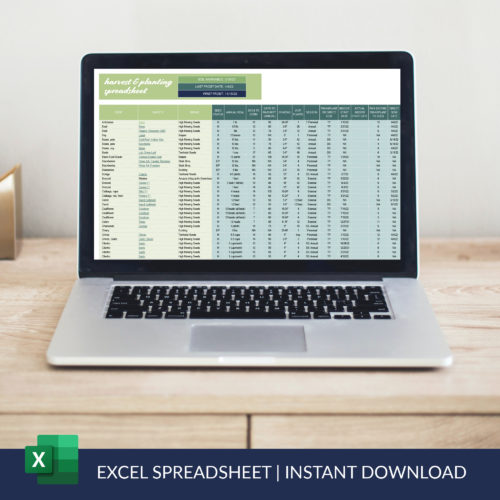
Leave a Reply